History

 Pretty much everyone these days has been to a music concert. It may have been Rock-and-Roll, Country, Pop, Rap, or any number of others, but concerts are here to stay. So, how did they get here? The event that is now recognized as history’s first major rock-and-roll show actually started out as a dance called the Moondog Coronation Ball, held of March 21, 1952, in Cleveland, Ohio. It was initiated by host Alan Freed, at the suggestion of Cleveland record-store owner Leo Mintz, who decided to sponsor three hours of late-night programming on WJW to showcase rhythm-and-blues music. Alan Freed was then installed as host. Freed quickly took to the task, adopting a new, hip persona and vocabulary that included liberal use of the phrase “rock and roll” to describe the music he was now promoting. It must have been an exciting time for him, to be there for the invention of concerts.
Pretty much everyone these days has been to a music concert. It may have been Rock-and-Roll, Country, Pop, Rap, or any number of others, but concerts are here to stay. So, how did they get here? The event that is now recognized as history’s first major rock-and-roll show actually started out as a dance called the Moondog Coronation Ball, held of March 21, 1952, in Cleveland, Ohio. It was initiated by host Alan Freed, at the suggestion of Cleveland record-store owner Leo Mintz, who decided to sponsor three hours of late-night programming on WJW to showcase rhythm-and-blues music. Alan Freed was then installed as host. Freed quickly took to the task, adopting a new, hip persona and vocabulary that included liberal use of the phrase “rock and roll” to describe the music he was now promoting. It must have been an exciting time for him, to be there for the invention of concerts.
The name of the event came from Alan Freed himself, who hosted the enormously popular “Moondog Show” on Cleveland AM radio station WJW. He was initially hired in 1951 to be the host of a classical-music program, but when Mintz told Freed about the trend he was watching among his young customers…of all races toward rhythm-and-blues records by black musicians, Freed took his career in a different direction. The two men got together and decided to promote the new show by having a dance and concert to promote those hot new artists. With that, the Moondog Coronation Ball was born. With the promotion kicked into high gear on the local radio station, tickets sold out in a single day. Still, that didn’t stop thousands of teenagers from lining up outside the biggest venue in town in the hours before show time. These days, we would think a riot was about to take place, and…maybe it was. It was a chilly Friday night in Cleveland, and outside the Cleveland Arena the scene would look quite familiar to anyone who has ever attended a major rock concert. But no one on this particular night had ever even heard of a “rock concert” before, much less stood in line for one.
On tap for “The Moondog Coronation Ball” were headliners Paul Williams and his Hucklebuckers, as well as Tiny Grimes and the Rocking Highlanders (a black instrumental group that performed in Scottish kilts). While musicians who have to cancel, or problems with equipment have been known to shut down an event, no one could have expected that the incredible demand for tickets proved to be the event’s undoing. The problem was exacerbated by massive ticket counterfeiting and possibly by overbooking on the part of the event’s sponsors. The arena had a capacity of 10,000 people, but an estimated 20,000 to 25,000 fans turned out for an event. Those fans who could not get in, though they held a ticket, legal or not, were trying to gain entry. Less than an hour into the show, the massive overflow crowd broke through the gates that were keeping them outside. In an effort to save lives, the police quickly moved in to stop the show almost as soon as it began. The angry fans 
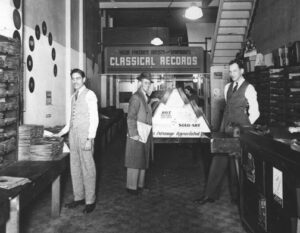 wanted an explanation. On the radio the very next evening, Alan Freed offered an apology to listeners who had tried to attend the canceled event. The only thing he could do was to be honest with them and apologize. Freed told his fans, “If anyone…had told us that some 20,000 or 25,000 people would try to get into a dance, I suppose you would have been just like me. You would have laughed and said they were crazy.” The “failure” of the Moondog Coronation Ball was actually its success. Who could have known?
wanted an explanation. On the radio the very next evening, Alan Freed offered an apology to listeners who had tried to attend the canceled event. The only thing he could do was to be honest with them and apologize. Freed told his fans, “If anyone…had told us that some 20,000 or 25,000 people would try to get into a dance, I suppose you would have been just like me. You would have laughed and said they were crazy.” The “failure” of the Moondog Coronation Ball was actually its success. Who could have known?
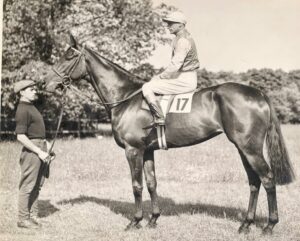 In horse racing there are several races which are the most prestigious races and the most sought-after wins. One of these is held at Belmont Park, a thoroughbred horse racetrack in Elmont, New York, just east of New York City limits best known for hosting the Belmont Stakes, the final leg of the American Triple Crown. It was opened on May 4, 1905, and is one of the best well known racetracks in the United States. I’m sure that over the years, there have been a number of shocking wins at Belmont Park, as with any other race, but few, if any, of them can lay claim to the strangeness of the June 4, 1923, win at Belmont Park.
In horse racing there are several races which are the most prestigious races and the most sought-after wins. One of these is held at Belmont Park, a thoroughbred horse racetrack in Elmont, New York, just east of New York City limits best known for hosting the Belmont Stakes, the final leg of the American Triple Crown. It was opened on May 4, 1905, and is one of the best well known racetracks in the United States. I’m sure that over the years, there have been a number of shocking wins at Belmont Park, as with any other race, but few, if any, of them can lay claim to the strangeness of the June 4, 1923, win at Belmont Park.
Frank Hayes, who was born in 1901 (there is some dispute on his date of birth, with some saying 1888) was an Irish horse trainer and jockey who. As both trainer and jockey, each win was especially sweet. Still, like most big goals, sometimes you had to pay your dues before you finally got that win. The twenty-two-year-old Hayes had never won a race before, because technically, he was not a jockey, but a horse trainer and stableman. Working in that capacity, Hayes was just biding his time until the day when he would actually get to be the jockey in a race.
That day came on June 4, 1923. Hayes was riding a horse called Sweet Kiss, owned by Miss A M Frayling. Sweet Kiss had been given 20:1 odds of winning. Basically, that meant that Sweet Kiss winning was highly 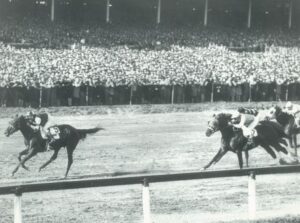 unlikely. With those odds, there really wasn’t much stress on Hayes, which he probably felt was a good thing for his first race. Hayes already had enough stress going on, because he was heavy for a jockey. It’s possible that he knew that he may not have a long career as a jockey, because he was simply bigger than the average jockey. That said, Hayes began an extreme slimming effort to meet the weight requirements and dropped his weight from 142 pounds to 130 pounds at the time of the race.
unlikely. With those odds, there really wasn’t much stress on Hayes, which he probably felt was a good thing for his first race. Hayes already had enough stress going on, because he was heavy for a jockey. It’s possible that he knew that he may not have a long career as a jockey, because he was simply bigger than the average jockey. That said, Hayes began an extreme slimming effort to meet the weight requirements and dropped his weight from 142 pounds to 130 pounds at the time of the race.
In the latter part of the race, a two mile, 12-jump steeplechase, Hayes suffered a fatal heart attack, but somehow his body stayed in the saddle. The spectators thought that Hayes was showboating his win, slumped over and riding with one hand, “relaxed as a dog sleeping in front of a fireplace.” In reality, Sweet Kiss had to have been an exceptional horse, because even without her rider making the usual encouraging maneuvers to push her forward to the win, Sweet Kiss and her dead jockey, crossed the finish line, winning by a head, making Hayes the first, and so far, only jockey known to have won a race after death. Hayes’ death was not discovered until Miss Frayling and race officials came to congratulate him shortly after the race, at which point the shocking phenomenon was discovered. It is thought that the fatal heart attack may have been brought on by Hayes’ extreme weight loss efforts. Losing so much weight in such a short time is very hard on the body and especially the heart.
Following the discovery of Hayes’ death, all the normal post-race formalities were waived by the Jockey Club. 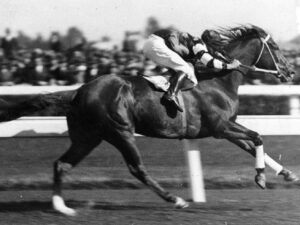 The results of the race were declared official without the post-race weigh in. Frank Hayes was buried three days later, dressed in his beloved racing silks at Holy Cross Cemetery in Brooklyn, New York City. It is definitely what he would have wanted, because racing was all he ever wanted to do. Sweet Kiss never raced again, and it is claimed that the horse was nicknamed “Sweet Kiss of Death” for the rest of her life. I suppose no other jockey would want to ride the horse, since jockeys can be a superstitious bunch. Personally, the tragic death aside, I think that Sweet Kiss had to have been a wonderful horse. Not only did she win the race, but she didn’t lose her rider. It is sad that Hayes died during his one and only race, but I’m sure he was happy to be going out a winner.
The results of the race were declared official without the post-race weigh in. Frank Hayes was buried three days later, dressed in his beloved racing silks at Holy Cross Cemetery in Brooklyn, New York City. It is definitely what he would have wanted, because racing was all he ever wanted to do. Sweet Kiss never raced again, and it is claimed that the horse was nicknamed “Sweet Kiss of Death” for the rest of her life. I suppose no other jockey would want to ride the horse, since jockeys can be a superstitious bunch. Personally, the tragic death aside, I think that Sweet Kiss had to have been a wonderful horse. Not only did she win the race, but she didn’t lose her rider. It is sad that Hayes died during his one and only race, but I’m sure he was happy to be going out a winner.
 These days, we look forward to the eclipses that happen periodically with anticipation. People will even make travel plans to be at the best location to see the eclipse at its fullest coverage. This was not always the case, however. Eclipses of the distant past could even invoke fear among the people who witnessed them. Of course, in those days, they most likely didn’t know it was coming, or even what it was. On May 28, 585 BC such an eclipse occurred.
These days, we look forward to the eclipses that happen periodically with anticipation. People will even make travel plans to be at the best location to see the eclipse at its fullest coverage. This was not always the case, however. Eclipses of the distant past could even invoke fear among the people who witnessed them. Of course, in those days, they most likely didn’t know it was coming, or even what it was. On May 28, 585 BC such an eclipse occurred.
At the time of the eclipse, the Medians and Lydians were in the middle of a vicious battle. I’m sure they didn’t notice the eclipse at first, but as it became darker and darker, the situation had to seem very strange. Before long, they forgot about the vicious battle they were fighting and ran off the battlefield. “The Eclipse of Thales” was a solar eclipse that was, according to ancient Greek historian Herodotus,  actually predicted accurately by the Greek philosopher Thales of Miletus. In fact, it is probably the earliest recorded as being known in advance of its occurrence, and it is believed to be the solar eclipse of May 28, 585 BC. It is not known exactly how Thales predicted the eclipse, and some scholars don’t actually believe the eclipse was ever predicted at all. Others think it was on a different date, but the eclipse of May 585 BC best matches the conditions of visibility necessary to explain the historical event.
actually predicted accurately by the Greek philosopher Thales of Miletus. In fact, it is probably the earliest recorded as being known in advance of its occurrence, and it is believed to be the solar eclipse of May 28, 585 BC. It is not known exactly how Thales predicted the eclipse, and some scholars don’t actually believe the eclipse was ever predicted at all. Others think it was on a different date, but the eclipse of May 585 BC best matches the conditions of visibility necessary to explain the historical event.
According to Herodotus, the appearance of the eclipse was actually interpreted as an omen. It is believed to 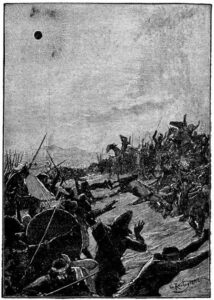 have interrupted a battle in a long-standing war between the Medes and the Lydians. American writer Isaac Asimov described this battle as “the earliest historical event whose date is known with precision to the day.” The prediction has since been called “the birth of science.” According to historical records, that eclipse “peaked over the Atlantic Ocean at 37.9°N 46.2°W and the umbral path reached south-western Anatolia in the evening hours.” The Halys River, which is the presumed site of the battle mentioned by Herodotus, was just at the edge of the margin of error for the positioning of the eclipse. Herodotus’ The Histories 1.73–74 states that “a war started in that period between the Medes and the Lydians.” Apparently, the combatants became so distraught about the darkening conditions, that they actually ran off of the battlefield. Basically saying…”I’m outta here!!” That would be an interesting end to a battle, and it makes me wonder if they were later laughed at for their “cowardice in battle!!”
have interrupted a battle in a long-standing war between the Medes and the Lydians. American writer Isaac Asimov described this battle as “the earliest historical event whose date is known with precision to the day.” The prediction has since been called “the birth of science.” According to historical records, that eclipse “peaked over the Atlantic Ocean at 37.9°N 46.2°W and the umbral path reached south-western Anatolia in the evening hours.” The Halys River, which is the presumed site of the battle mentioned by Herodotus, was just at the edge of the margin of error for the positioning of the eclipse. Herodotus’ The Histories 1.73–74 states that “a war started in that period between the Medes and the Lydians.” Apparently, the combatants became so distraught about the darkening conditions, that they actually ran off of the battlefield. Basically saying…”I’m outta here!!” That would be an interesting end to a battle, and it makes me wonder if they were later laughed at for their “cowardice in battle!!”
 SS Torrey Canyon was a supertanker that was responsible for one of the world’s most serious oil spills. The Torrey Canyon ran aground on rocks off the south-west coast of the United Kingdom in 1967. In all 25 -36 million gallons of crude oil was spilled. There were a number of attempts to mitigate the damage, one of which was to actually bomb the wreck by aircraft from the Royal Navy and Royal Air Force. I guess they thought the bombing would burn up the oil. Unfortunately, that was not the case, and hundreds of miles of coastline in Britain, France, Guernsey, and Spain were affected by the oil spill and other substances used in the attempt to mitigate damage. Even the “solution” was a big problem. The disaster was the world’s worst oil spill and led to significant changes in maritime law and oil spill responses.
SS Torrey Canyon was a supertanker that was responsible for one of the world’s most serious oil spills. The Torrey Canyon ran aground on rocks off the south-west coast of the United Kingdom in 1967. In all 25 -36 million gallons of crude oil was spilled. There were a number of attempts to mitigate the damage, one of which was to actually bomb the wreck by aircraft from the Royal Navy and Royal Air Force. I guess they thought the bombing would burn up the oil. Unfortunately, that was not the case, and hundreds of miles of coastline in Britain, France, Guernsey, and Spain were affected by the oil spill and other substances used in the attempt to mitigate damage. Even the “solution” was a big problem. The disaster was the world’s worst oil spill and led to significant changes in maritime law and oil spill responses.
The Torrey Canyon was built in the United States in 1959. She originally had a capacity of 60,000 tons, but that was later enlarged to 120,000 tons in Japan. She was named for Torrey Canyon, a valley located in Ventura County, California. SS Torrey Canyon was registered in Liberia and owned by Barracuda Tanker Corporation, which is a subsidiary of Union Oil Company of California, but she was chartered to British Petroleum. SS Torrey Canyon was 974.4 feet long, with a 125.4 feet beam and a 68.7 feet draught.
On February 19, 1967, SS Torrey Canyon began what was to be her final voyage. She left the Kuwait National Petroleum Company refinery at Mina Al-Ahmadi, Kuwait, which was later called Al-Ahmadi, with a full cargo of crude oil. The ship was bound for Milford Haven in Wales. By March 14, she reached the Canary Islands. After 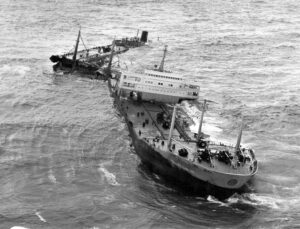 that, things went wrong. It all started with a navigational error and ended when Torrey Canyon struck Pollard’s Rock on the extreme Western end of the Seven Stones between the Cornish mainland and the Isles of Scilly on March 18, 1967.
that, things went wrong. It all started with a navigational error and ended when Torrey Canyon struck Pollard’s Rock on the extreme Western end of the Seven Stones between the Cornish mainland and the Isles of Scilly on March 18, 1967.
Because SS Torrey Canyon did not have a scheduled route and she also didn’t have the necessary complement of full-scale charts of the Scilly Islands. Before long the crew of the SS Torrey Canyon found themselves on a collision course with a fishing fleet. The Master and the officer of the watch disagreed as to their exact position. Uncertainty as to whether the vessel was in manual or automatic steering mode significantly delayed corrective action, with the Master mistakenly believing he had switched the steering to manual for the helmsman. By the time they realized that they had not corrected the steering problem, they were too close to the rocks, and a grounding was unavoidable. Thus, began hours and days of extensive attempts to float the vessel off the reef, all of which failed and even resulted in the death of Captain Hans Barend Stal, a member of the Dutch salvage team.
Despite repeated attempts, the ship would not move off the rocks, and began to break up. Immediately thereafter, the focus changed to concentrating on the clean-up and containment of the resulting oil spill. The Cornwall Fire Brigade used huge amounts of detergent and attending Royal Navy vessels to try to disperse the oil. Then the UK Prime Minister Harold Wilson and his cabinet held a mini cabinet meeting at the Royal Naval Air Station Culdrose. The decision was made to set fire to the vessel and surrounding oil slick to limit the extent of the oil disaster. Then, on March 28, 1967, the Fleet Air Arm sent Blackburn Buccaneer planes from RNAS Lossiemouth to drop forty-two 1,000-pound bombs on the ship. The Royal Air Force sent Hawker Hunter jets 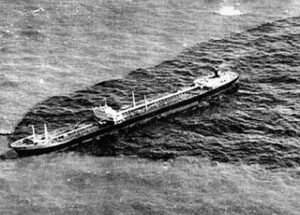 from RAF Chivenor to drop cans of aviation fuel to make the oil blaze. Unfortunately, exceptionally high tides put the fire out. The winds made it necessary to make further bombing runs by Sea Vixens from the RNAS Yeovilton and Buccaneers from the Royal Navy Air Station Brawdy, as well as more RAF Hunters with liquefied petroleum jelly, also known as napalm, to ignite the oil. The constant bombing lasted into the next day before the Torrey Canyon finally sank. About 161 1,000-pound bombs, 13,000 US gallons of kerosene, 3,600 US gallons of napalm and 16 other missiles had been aimed at the ship. Attempts to use foam-filled containment booms were mostly ineffectual because of the high seas. The disaster finally over, there was nothing left but the cleanup.
from RAF Chivenor to drop cans of aviation fuel to make the oil blaze. Unfortunately, exceptionally high tides put the fire out. The winds made it necessary to make further bombing runs by Sea Vixens from the RNAS Yeovilton and Buccaneers from the Royal Navy Air Station Brawdy, as well as more RAF Hunters with liquefied petroleum jelly, also known as napalm, to ignite the oil. The constant bombing lasted into the next day before the Torrey Canyon finally sank. About 161 1,000-pound bombs, 13,000 US gallons of kerosene, 3,600 US gallons of napalm and 16 other missiles had been aimed at the ship. Attempts to use foam-filled containment booms were mostly ineffectual because of the high seas. The disaster finally over, there was nothing left but the cleanup.

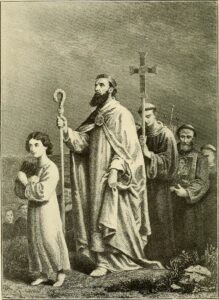 While I don’t believe in luck, my family does come from strong Irish roots. I believe in blessing, so when I go for the “wearin o’ the green” so that I don’t get pinched, I choose something with an Irish blessing on it instead of a “lucky horseshoe” to adorn my green. There are many Irish Blessings, and my favorites are the ones that emphasize that blessings come from God, not from luck. These days, Sait Patrick’s Day celebrations have little to do with the original purpose of the day. The day was originally a day to honor a man…Saint Patrick, who was known as the “Apostle of Ireland.” He was considered the primary patron saint of Ireland.
While I don’t believe in luck, my family does come from strong Irish roots. I believe in blessing, so when I go for the “wearin o’ the green” so that I don’t get pinched, I choose something with an Irish blessing on it instead of a “lucky horseshoe” to adorn my green. There are many Irish Blessings, and my favorites are the ones that emphasize that blessings come from God, not from luck. These days, Sait Patrick’s Day celebrations have little to do with the original purpose of the day. The day was originally a day to honor a man…Saint Patrick, who was known as the “Apostle of Ireland.” He was considered the primary patron saint of Ireland.
Saint Patrick originally came to Ireland very much against his will. He was about sixteen, when he was captured by Irish pirates from his home in Britain and taken as a slave to Ireland. He writes that he lived there for six years as an animal herder before finally escaping and returning to his family. You might have thought that after such an ordeal, he would never want to go back, but after becoming a cleric, he returned to spread Christianity in northern and western Ireland. Saint Patrick went on to become a bishop, but little is known about where he worked. Nevertheless, by the seventh century, he had come to be revered as the patron saint of Ireland. To think about what he went through, and then the very fact that he returned, definitely makes him a saint to me.
While partying and drinking green beer, parades and bars, and wearing green clothing all seem to be the 
 normal way of celebrating these days, the reality is that this is technically a very religious holiday that is all about forgiveness, and a love of the people of Ireland. Some places hold parades and go all out with a party, but some people still feel more reserved about the day. Time changes things. It used to be that in Ireland, Saint Patrick’s Day was “celebrated” with church services, prayer, and a feast, but in modern times, there are a variety of types of celebrations, and while partying tends to cause a loss of the real reason for the day, it is a sign of the times, I suppose. However you celebrate, I hope you all have a great holiday. Happy Saint Patrick’s Day everyone.
normal way of celebrating these days, the reality is that this is technically a very religious holiday that is all about forgiveness, and a love of the people of Ireland. Some places hold parades and go all out with a party, but some people still feel more reserved about the day. Time changes things. It used to be that in Ireland, Saint Patrick’s Day was “celebrated” with church services, prayer, and a feast, but in modern times, there are a variety of types of celebrations, and while partying tends to cause a loss of the real reason for the day, it is a sign of the times, I suppose. However you celebrate, I hope you all have a great holiday. Happy Saint Patrick’s Day everyone.
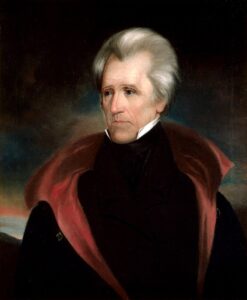 I’m not sure why it is that every president “needs” a pet. Nevertheless, it seems that it is expected, and the “first dog” seems to be the most common choice of pet. Dogs are the most commonly talked about pets in the White House…in recent years anyway. The fact is that ever since George Washington, there has been a myriad of different animals that earned the title of presidential pet or first pet. Some of the more manageable animals to come under the care of the president were cats, horses, donkeys, cows, goats, and hamsters. Oddly, there were also the more “unique” animals that lived in the White House too, including, and often only temporarily, bobcats, raccoons, lions, tigers, and bears, if you can believe it.
I’m not sure why it is that every president “needs” a pet. Nevertheless, it seems that it is expected, and the “first dog” seems to be the most common choice of pet. Dogs are the most commonly talked about pets in the White House…in recent years anyway. The fact is that ever since George Washington, there has been a myriad of different animals that earned the title of presidential pet or first pet. Some of the more manageable animals to come under the care of the president were cats, horses, donkeys, cows, goats, and hamsters. Oddly, there were also the more “unique” animals that lived in the White House too, including, and often only temporarily, bobcats, raccoons, lions, tigers, and bears, if you can believe it.
One of the more common kind of animals was the variety of birds that have worn the title pf presidential pet. Birds, such as turkeys, mockingbirds, parakeets, and several other species of parrot and songbird have been the companions of past presidents and their families. One of the presidents that had a bird was Andrew Jackson, the seventh president, who owned a variety of pets, among them, an African grey parrot named Poll that he had purchased for his wife, Rachel. Unfortunately, had very little influence on Poll, because she died of a heart attack not long after his election in 1828. Because of Rachel’s untimely death, and unlike other presidential parrots, Poll took on some of Jackson’s more unbecoming characteristics. To put it mildly, Andrew Jackson was 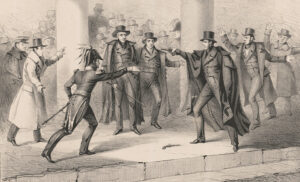 an exceptionally volatile individual who often disregarded formality. On the one hand, Jackson’s character helped him to actually survive an assassination attempt and to win the Battle of New Orleans. Both of these made him quite popular, even though the treaty that followed the battle, was almost pointless, and so the battle was viewed much the same. On the other hand, as both a general and later president, Jackson used every tool at his disposal to crush indigenous sovereignty. He really had no use for the Native Americans, or at least not for their rights as a sovereign nation. In fact, his actions both directly and indirectly caused the deaths of thousands of Native Americans.
an exceptionally volatile individual who often disregarded formality. On the one hand, Jackson’s character helped him to actually survive an assassination attempt and to win the Battle of New Orleans. Both of these made him quite popular, even though the treaty that followed the battle, was almost pointless, and so the battle was viewed much the same. On the other hand, as both a general and later president, Jackson used every tool at his disposal to crush indigenous sovereignty. He really had no use for the Native Americans, or at least not for their rights as a sovereign nation. In fact, his actions both directly and indirectly caused the deaths of thousands of Native Americans.
Nevertheless, where Poll was concerned, the loss of Rachel and Jacksons crude talk led to a number of problems later on. Poll was therefore almost constantly exposed to the already foul-mouthed and hot-tempered president. I don’t suppose all that matter very much to Jackson, who was obviously used to his own way of speaking, but on the day of Jackson’s funeral, it was decided by Jackson, that Poll was to be in attendance, 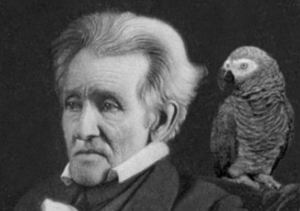 along with the grieving spectators. I can only imagine the guests, especially of that era, Jackson passed away on June 8, 1845, when after possibly being unnerved by the number of people, Poll proceeded to shock all of the guests when he began to exclaim all sorts of profanity and otherwise inappropriate language. According to witnesses, Poll’s outbursts were so disruptive that the bird had to be escorted away from the proceedings. Even after his departure, I’m sure that the prim and proper ladies and gentlemen had to take a moment to compose themselves before the funeral could continue. I guess it just goes to show that sometimes, more than just our children are listening to every word we say.
along with the grieving spectators. I can only imagine the guests, especially of that era, Jackson passed away on June 8, 1845, when after possibly being unnerved by the number of people, Poll proceeded to shock all of the guests when he began to exclaim all sorts of profanity and otherwise inappropriate language. According to witnesses, Poll’s outbursts were so disruptive that the bird had to be escorted away from the proceedings. Even after his departure, I’m sure that the prim and proper ladies and gentlemen had to take a moment to compose themselves before the funeral could continue. I guess it just goes to show that sometimes, more than just our children are listening to every word we say.

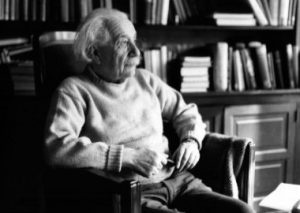 I have always been intrigued by Albert Einstein. Albert Einstein had an estimated IQ (Intelligence Quotient) of 160 to 190, although it was never really tested, so it could be higher. According to Mensa International, IQ is a score that identifies how far above or below someone is in comparison to others’ mental ability. Mensa is the largest and oldest high-IQ society in the world. It is a non-profit organization open to people who score at the 98th percentile or higher on a standardized, supervised IQ or other approved intelligence test.
I have always been intrigued by Albert Einstein. Albert Einstein had an estimated IQ (Intelligence Quotient) of 160 to 190, although it was never really tested, so it could be higher. According to Mensa International, IQ is a score that identifies how far above or below someone is in comparison to others’ mental ability. Mensa is the largest and oldest high-IQ society in the world. It is a non-profit organization open to people who score at the 98th percentile or higher on a standardized, supervised IQ or other approved intelligence test.
The term, IQ originated in 1912, and since then, IQ tests have been further developed to define standard deviations of someone’s logic and reasoning. Nevertheless, even with the tests, intelligence is not easy to measure. Many of those who are considered “the smartest people in the world,” such as Stephen Hawking and Albert Einstein, do not have extraordinarily high IQ scores in comparison with others. Still, the prowess they display in their everyday life and in the great achievements they make shows their intelligence in ways no test can effectively measure. I would think that this is a far greater measure of their intelligence. Some of the most intelligent people do not do well and do not like taking a test. Some even get very anxious when testing.

Of course, we have all heard of the famous Einstein equation E = MC² and have probably wondered what that was all about. It was in his 1905 paper, that Einstein proposed his famous equation: E = MC². That equation laid out a new understanding of “the matter/energy relationship where the energy of a body is equal to the mass of that body multiplied by the speed of light squared.” Now, if that doesn’t make sense to you…well, you are among the majority of people who feel the same way. First of all, tell me how fast if the speed of light squared. No, I can’t explain that either…but, Einstein knew. Einstein was awarded the Nobel Prize in Physics for his study of the photoelectric effect in 1921. Einstein (a Jewish man) immigrated to the United States during the outbreak of World War II, after being targeted by Hitler’s administration. In the United States, his work became crucial in the development of the atomic bomb later during the war.
While his great discoveries and scientific advancements were crucial to advancement on the world stage, they were not his only abilities. Einstein was outspoken, eloquent, and he had abilities that were far beyond the confines of the scientific community. He played the violin. He loved both the classic and popular literature of his time. He was funny, often without realizing it. He once told a conductor on the train he had boarded, when 
 asked for the ticket he had misplaced, that if he did not find his ticket…he would not know where to get off!! Eistein kept his mind clear for more important things, but not cluttering it with things that could be written down, such as the station when he was to disembark. He was also not snooty, and certainly not above making the occasional funny face. He was known for having clutter. He had too much on his mind to worry about neatness. All in all, Einstein was simply a real person, and his personality took in all that entailed. Today marks the 145th anniversary of this great man’s birth. I would have liked very much to know Albert Einstein.
asked for the ticket he had misplaced, that if he did not find his ticket…he would not know where to get off!! Eistein kept his mind clear for more important things, but not cluttering it with things that could be written down, such as the station when he was to disembark. He was also not snooty, and certainly not above making the occasional funny face. He was known for having clutter. He had too much on his mind to worry about neatness. All in all, Einstein was simply a real person, and his personality took in all that entailed. Today marks the 145th anniversary of this great man’s birth. I would have liked very much to know Albert Einstein.

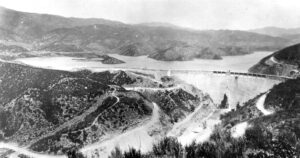 For as long as there have been dams to control water, there have been problems with those same dams. The Saint Francis dam in the San Francisquito Canyon in California was a concrete gravity dam, that was built between 1924 and 1926. A gravity dam is a dam constructed from concrete or stone masonry and designed to hold back water by using only the weight of the material and its resistance against the foundation. Gravity dams are designed so that each section of the dam is stable and independent of any other dam section…theoretically. The Saint Francis had only been standing two years, when it suddenly failed in 1928. The failure was catastrophic, and the flood that followed killed at least 431 people, in what is considered to have been one of the worst American civil engineering disasters of the 20th century and the third-greatest loss of life in California history. How could a dam that was only two years old fail so soon and so horribly.
For as long as there have been dams to control water, there have been problems with those same dams. The Saint Francis dam in the San Francisquito Canyon in California was a concrete gravity dam, that was built between 1924 and 1926. A gravity dam is a dam constructed from concrete or stone masonry and designed to hold back water by using only the weight of the material and its resistance against the foundation. Gravity dams are designed so that each section of the dam is stable and independent of any other dam section…theoretically. The Saint Francis had only been standing two years, when it suddenly failed in 1928. The failure was catastrophic, and the flood that followed killed at least 431 people, in what is considered to have been one of the worst American civil engineering disasters of the 20th century and the third-greatest loss of life in California history. How could a dam that was only two years old fail so soon and so horribly.
Not everyone was in favor of the dam, which as it turns out was only the second concrete dam to be designed and built by the Bureau of Water Works and Supply. The first was the nearly “dimensionally identical” Mulholland Dam. That dam construction was had begun one year earlier. The design of the Saint Francis Dam was actually an adaptation of the Mulholland Dam. The designer made modifications to suit the site, but can the same design work in two different locations. I suppose it could in the case of a building, but a dam would need to be designed with the specific soil type, terrain structure, and even earthquake fault lines in mind. The adaptations were supposed to take stress factors into consideration. Most of the design changes and computation figures of the possible stress factors for the Saint Francis Dam came from the work of the plans and formulas which had been used in the constructing of the Mulholland Dam. This work was done by the engineering department within the Bureau of Water Works and Supply.
The dam was built to serve the growing water needs of the city of Los Angeles. The plan was to create a large regulating and storage reservoir that was to be an important part of the Los Angeles Aqueduct. Unfortunately, the defective soil foundation of the area, and the design flaws of the dam led to the dam’s collapse just two 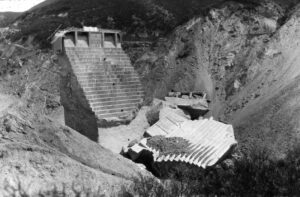
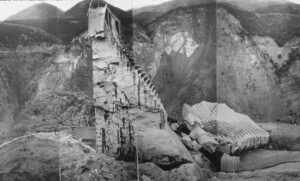 years after its completion. Two and a half minutes before midnight on March 12, 1928, the Saint Francis Dam catastrophically failed. Its failure caused the death of 431 people, and it ended the career of William Mulholland, the general manager and chief engineer of the Bureau of Water Works and Supply (now the Los Angeles Department of Water and Power).
years after its completion. Two and a half minutes before midnight on March 12, 1928, the Saint Francis Dam catastrophically failed. Its failure caused the death of 431 people, and it ended the career of William Mulholland, the general manager and chief engineer of the Bureau of Water Works and Supply (now the Los Angeles Department of Water and Power).
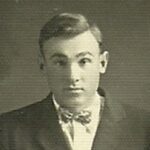
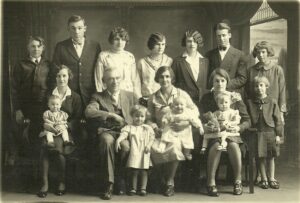 When my husband’s grandfather, Andy Schulenberg began his life, it was in perfect health. He was the oldest child of his parents Max and Julia Schulenberg. For the next fourteen years, siblings arrived on a regular basis, and Andy became the big brother to all of them. As with all big brothers, the younger nine kids looked up to their big brother….even the ones who were born after the incident that changed everything. When Andy was about 14 years old, he was out hunting, when something went terribly wrong. I don’t know exactly how, and maybe nobody does, but Andy was shot in the leg, and it was very serious.
When my husband’s grandfather, Andy Schulenberg began his life, it was in perfect health. He was the oldest child of his parents Max and Julia Schulenberg. For the next fourteen years, siblings arrived on a regular basis, and Andy became the big brother to all of them. As with all big brothers, the younger nine kids looked up to their big brother….even the ones who were born after the incident that changed everything. When Andy was about 14 years old, he was out hunting, when something went terribly wrong. I don’t know exactly how, and maybe nobody does, but Andy was shot in the leg, and it was very serious. 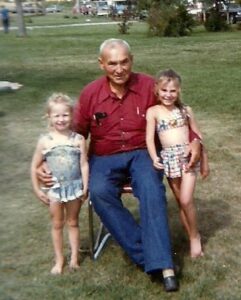
I can’t imagine how worried his parents were when they got the news. You never want to get bad news concerning your child, and this was some of the worst news there is. I’m sure that hearing that he would live was a huge relief, but the loss of his leg…just devastating. No one really knows how a person will be able to recuperate from such a loss. It affects not only the body, but the mind too. Our bodies aren’t designed to lose a limb. Can we survive that? Yes, but it will take time. For Andy, that meant a year in the hospital. He had to be fitted with a peg. They might have had a primitive form of a prosthetic leg, but probably not. So, for Andy, it would be a peg. Andy was a determined young man, and he refused to let this beat him. He was only 14 years old, and he had a life he wanted to live, yes, was determined to live.
So, he persevered and worked hard to recover and to learn how to maneuver. These days, a person who has suffered an amputation would see, not only a doctor, buy also a psychiatrist as well. It is a well-known fact, 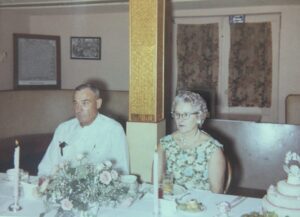
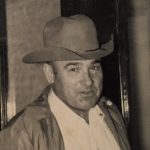 these days anyway, that such an injury affects the mind as much as the body. That was not as well known in those days, so Andy had to dig deep inside himself and pull out the fortitude and reshape his own life, and later became the sheriff of Rosebud County Montana. I think that the way he pulled himself up and got on with the business of life was just amazing. Today is the 118th anniversary of Grandpa Andy’s birth. Happy birthday in Heaven, Grandpa. We love and miss you very much.
these days anyway, that such an injury affects the mind as much as the body. That was not as well known in those days, so Andy had to dig deep inside himself and pull out the fortitude and reshape his own life, and later became the sheriff of Rosebud County Montana. I think that the way he pulled himself up and got on with the business of life was just amazing. Today is the 118th anniversary of Grandpa Andy’s birth. Happy birthday in Heaven, Grandpa. We love and miss you very much.

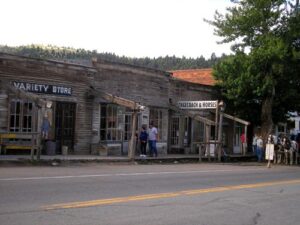 George Lane was a shoemaker by trade, back in the mid 1800s. He also had a birth defect, that earned him the nickname he hated all his life…Clubfoot. In an event that seems rather unusual to me, Lane was accused of being a member of Henry Plummer’s gang of “Innocents” and was hanged by Montana Vigilantes in January 1864. Lane was a small man, originally from Massachusetts. He later made his way to the west during the California Gold Rush. Like many people back then, he dreamed of becoming rich, and the Goldrush seemed as likely a way as any other. Things didn’t exactly go as planned, and he ended up working first on a farm in Yuba County, before making his way to Calaveras County, where he worked as a store clerk. Not quite the glamorous outcome he had in mind.
George Lane was a shoemaker by trade, back in the mid 1800s. He also had a birth defect, that earned him the nickname he hated all his life…Clubfoot. In an event that seems rather unusual to me, Lane was accused of being a member of Henry Plummer’s gang of “Innocents” and was hanged by Montana Vigilantes in January 1864. Lane was a small man, originally from Massachusetts. He later made his way to the west during the California Gold Rush. Like many people back then, he dreamed of becoming rich, and the Goldrush seemed as likely a way as any other. Things didn’t exactly go as planned, and he ended up working first on a farm in Yuba County, before making his way to Calaveras County, where he worked as a store clerk. Not quite the glamorous outcome he had in mind.
In 1860, gold was discovered in Washington Territory, and Lane once again followed the miners, with plans to “get rich quick” forming in his head. Again, Lane ran into trouble. This time in 1862 when a Lewiston, Idaho rancher accused him and another man of “running off horses.” That “crime” didn’t really seem as serious as the rancher supposed, but then I am not a lawman. Wanting to straighten things out, Lane turned himself into the Fort Lapwai commander, who assigned them to help with building construction. The following year, he and another man were accused of a similar crime, this time, driving a stolen horse herd toward the Snake River. The alleged horse thieves escaped, and by the fall of 1863, Lane had made his way to Virginia City, Montana. His situation and the oddly recurring events, make you wonder if he was as innocent as he claimed. He did, after all, run from the law his time. He soon went to work for Dance and Stuwart’s Store, mending harnesses and making and repairing boots. It would appear that he was at least trying to lead an honest life.
Lane began earning the respect of his employers. Nevertheless, he again came under suspicion when he rode to Bannack, Montana, to inform Henry Plummer of the George Ives trial taking place in Nevada City in December 1863. Though Plummer was absent at the time, Lane told Deputies Ray and Stinson of the growing vigilance movement in Virginia City. It would seem to me that when you are suspected of being a part of a criminal gang, that should be the furthest thing from your thoughts, if you want to look innocent anyway. Because of that trip, when the Vigilance Committee met the following month, Lane’s name immediately came up as a “spy” for the outlaw gang called The Innocents.
On January 14, 1864, Lane was arrested at Dance and Stuart’s store. When he asked why he was being arrested, the men informed him, “For being a road agent, thief, and an accessory to numerous robberies and murders on the highway.” Lane responded by saying, “If you hang me, you will hang an innocent man.” While his bosses liked and respected Lane, they assumed that the vigilantes had evidence against Lane, so they did not intervene. Not everyone thought Lane was guilty, but the Committee tried him anyway and found him guilty. He was sentenced to be hanged along with Frank Parish, Boone Helm, Haze Lyons, and Jack Gallager. Lane requested a minister be brought before he was executed which was scheduled to be the first execution. Then, as he was forced to stand on a box under the noose, Lane saw a friend. He yelled out, “Goodbye, old fellow; I’m gone.” He then leaped from the box without waiting for it to be removed…going out on his own terms. He and the others hanged that day were buried in Virginia City’s Boot Hill Cemetery. As punishment, none of the graves were given markers.
Placing no markers while maybe a “fitting punishment” can later pose a problem. Weh people began to ask who 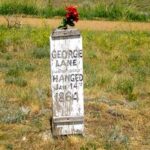
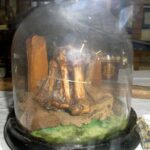 was in these graves, some 43 years later, it brought in question the deaths. In 1907, a former vigilante came forward, saying that he knew the order of the graves, and which one was Club Foot George’s. Their curiosity peaked now, the city soon dug up the grave that was allegedly Clubfoot George Lane’s. Everyone was surprised when he had been right. The deformed foot belonging to George Lane was indeed in the grave. The foot bones were then placed in a cabinet in the courthouse. Later, they were moved and placed on display in a glass jar at the Thompson Hickman Museum in Virginia City, Montana.
was in these graves, some 43 years later, it brought in question the deaths. In 1907, a former vigilante came forward, saying that he knew the order of the graves, and which one was Club Foot George’s. Their curiosity peaked now, the city soon dug up the grave that was allegedly Clubfoot George Lane’s. Everyone was surprised when he had been right. The deformed foot belonging to George Lane was indeed in the grave. The foot bones were then placed in a cabinet in the courthouse. Later, they were moved and placed on display in a glass jar at the Thompson Hickman Museum in Virginia City, Montana.

